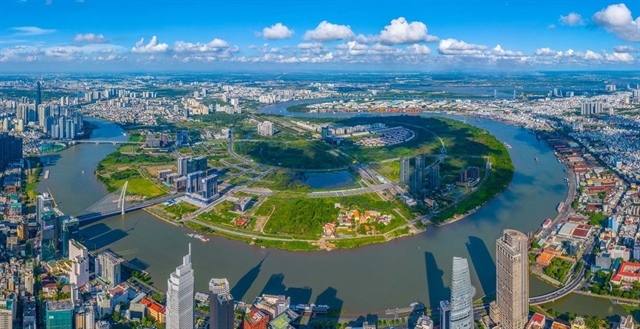New approach to FDI strategy
New approach to FDI strategy
The new strategy for foreign direct investment (FDI) attraction should be more selective and strategic, and should especially incentivize projects to make substitutes for imports of up- and mid-stream hi-tech products.

Vietnam’s economy has been heavily dependent on foreign markets. In 2018, the country’s import and export of goods and services amounted to a value equivalent to 208.6% of its gross domestic product (GDP). The U.S. and China are the two biggest markets, which accounted for 20% and 17% of Vietnam’s total exports in the first 11 months of the year, respectively.
Therefore, Vietnam’s economy will be greatly affected by the Sino-U.S. trade war. The world’s two biggest economic powerhouses will slow down, thus narrowing the export market of Vietnam. The U.S. tariff on Chinese goods will increase U.S. imports from other countries, but Vietnam will not benefit much from the import shift because most Chinese goods exported to the U.S. are those which Vietnam does not have a competitive edge, except for labor-intensive products, typically garments and textiles. However, Vietnam has already gained a relatively large share of U.S. textile and garment imports, and has little room for further exports because it is likely to become a target for higher tariffs by the Trump Administration. Vietnam currently ranks fifth in trade surplus with the U.S. The surplus in 2017 is US$38 billion.
A positive impact of the Sino-U.S. trade war is the shift of many manufacturing facilities from China to ASEAN countries, with Vietnam as the main focus. The trend started four or five years ago when the labor cost in China increased, but it will gain strong momentum in the current situation, especially for export-oriented projects.
Vietnam should take advantage of this opportunity to welcome the new FDI wave, giving priority to projects that can help deepen industrialization and improve further industrial restructuring. Over the past three decades of economic reform, industrialization has played a significant role in driving economic growth, at an average rate of 6.5% per year. However, the industrialization in Vietnam is still sub-par in both quantity and quality. The golden population age in Vietnam is near an end but the share of industry in the GDP is just about 20%, while East Asian countries in the same condition have a share of over 30%.
Furthermore, Vietnam’s industry is primarily assembly (downstream production) and is at the low end of the production value chain. Therefore, to produce more and export more industrial products, the country has to import more components, parts and other intermediary commodities (mid- and upstream products). For example, to export greater amounts of apparel, she needs to import more yarns and fabrics. The more export of cellphones, the more imports of hi-tech electronic components. Printers, computers and other machines are in the same shoe.
A large share of those components and intermediary products is supplied by China. The author of this article was really impressed when the director of a Japanese-invested printer company in Vietnam said import of molds from China amounted to as much as US$100 million a year. He said those molds can be manufactured in Vietnam to replace imports if the country has an appropriate policy.
Consequently, the new FDI wave is an opportunity for Vietnam to boost the supporting industries and develop mid- and upstream production to deepen industrialization. The FDI sector currently holds a major share in Vietnam’s economy but it has little ripple effect on the domestic sector in terms of technology. Therefore, the policy for the new FDI wave should be more selective and strategic, and should especially incentivize projects to make substitutes for imports of mid- and upstream hi-tech products.
In addition, the policy should encourage the joint venture with local enterprises, and 100% foreign investment should be limited to special cases. To render this policy effective, local enterprises should also be supported and offered favorable conditions (in capital access, land, improved business environment and low administrative cost) so that they could participate in manufacturing substitutes for mid- and upstream products and boost alliance with FDI enterprises. At present, most projects in the FDI sector are wholly foreign-owned and have little links with local enterprises, creating a two-tier economy with little connection between the two sectors. The new FDI policy should address this imbalance.
The Sino-U.S. trade war may reduce Vietnam’s exports but the FDI wave resulting from the war will boost the production of substitutes for imports of mid- and upstream products. The foreign trade balance, therefore, will not change much despite the export fall. Furthermore, investment by the FDI and domestic sectors in mid- and upstream production will deepen industrialization and increase capital accumulation, hence bolstering further the economic strength of the country.





















